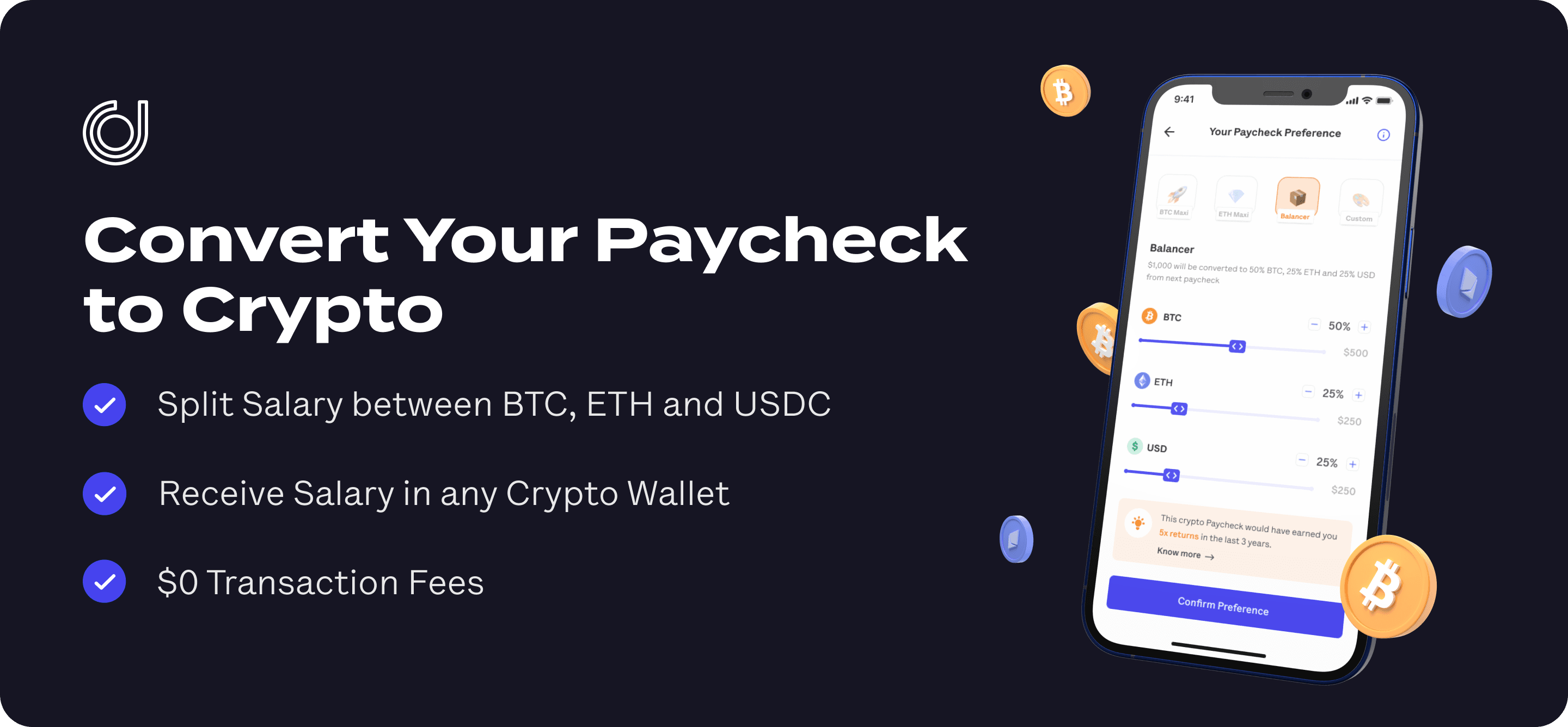Crypto
•
10 mins read
•
February 03, 2022
The Future of the Internet: web3
Your guide to understanding the current digital age — and what comes next!

When the internet was first developed, it had a name: Web 1.0. This is the internet as we knew it, up until 2005, where there was limited user interaction. Users couldn’t create content or comment on pages — instead, interactions were a one-way street.
Now, in our current age of the internet, we use Web 2.0. Thanks to web technologies like Java or HTML and platforms like Facebook, Google, and Twitter, the internet has become significantly more interactive. Now, data can be shared among different platforms, which means that user-generated content has flourished.
The next wave of internet technology is already being named Web 3.0, also known as web3.
And what is web3? Essentially, it’s the next phase of the web evolution, which is expected to make the internet even more intelligent than it currently is.
This includes harnessing the power of AI to run smart programs and assist users, which means that existing smart programs like blockchain and cryptocurrency technology will become even more ubiquitous.
Essentially, content creation and interactions will occur from both users and machines. Web3 will also be decentralized, users will have greater ownership, and — most importantly — it will be fun.

What is Web3?
So, web3 is an upcoming third generation of the internet, where websites and apps will be able to process information in a smart, human-like manner through technologies like machine learning, big data, and decentralized ledger technology.
, it’s the internet owned by builders and users, orchestrated with tokens.
When considering the web3 definition, it can be even further expanded to include that data will be interconnected in a decentralized way, which would be a huge leap from Web 2.0, where data is stored in a centralized manner. Moreover, both users and machines will be able to interact with the data, making AI a cornerstone of web3.
Web2 vs. Web3
There are a number of important differences when considering web2 vs. web3. In web2, the goal is community development and engagement with web applications, interactive advertising, languages like JavaScript and HTML and a network that owns the data online.
In web3, however, the goal will be to empower individual users through trust, increased security, and privacy. The real difference between web2 and web 3 is that in web3, there is an identity layer in every interaction. That natural identity later opens opportunities to different types of applications like decentralized governance, better machine learning (ML) models, enriched securities, innovative business models, and more.
In addition to these
protocols, web3 will have 3D graphics and each entity will have ownership over their own data. You can think of web2 vs. web3 as layers. If web1 was just “read” and web2 was “read and write”, web3 is “read, write, and own.”
These differences may be high-level, but what it ultimately boils down to is giving more power to users in the transition to web3. For example, consider what currently happens when a developer or corporation launches a new product or app. When a firm raises enough venture capital to create their idea, those investors expect a massive return on their investment. As such, companies are forced to pursue a short-term growth strategy built around marketing or data sales.
With more data, targeted ads can be created to launch more clicks and more ad money. Companies like Google, Facebook, Twitter, and others exploit this centralized user data and that process is fundamental to how we use and interact with web2 today. A data breach is almost expected, in fact.
As a result, with web2, you have little to no control over your data, how it gets stored, and how businesses track or use that data either. Moreover, governments can currently interfere and shut down a website or applications if they believe it is expressing an opinion that the party in control doesn’t want to be publicized.
All of these situations expose flaws in web2, from privacy hacks to a system that is designed to track and exploit data to regulation that inhibits free speech. Web3 is an attempt to radically rethink these processes.
Key Features of Web3
There are four key features of web3 that are important to understand: ownership, decentralization, fun, and incentives.
Ownership is particularly important in web3 as it allows users, for the first time, to have a say. The way in which web3 will do this is by relying heavily on
or non-fungible tokens, digital currencies, and other blockchain entities.
An idea for a corporate version of web3 is known as Decentralized Autonomous Organizations (DAOs), which will use tokens to distribute ownership and decision-making authority more evenly. Because these tokens will be stored on the blockchain, their owners have more control over them and they cannot be taken away or tracked. This is just one example of how the interactions between web3 and
technologies can be integrated in the future.
Decentralization is another feature of web3. Given that these are the founding blocks of blockchain and
technology, there is undoubtedly a strong link between these technologies. Applications on web3 will run on blockchains, which are decentralized networks, and offer a variety of services like compute, storage, bandwidth, identity, hosting, and others which have commonly been provided by cloud providers in the past. As such, unnecessary and inefficient intermediaries are cut out, as they are with other forms of decentralization.
Essentially, with web3, the blockchain and
will be seamlessly integrated and automated through smart contracts. This means that it can be used to power anything from micro-transactions to censorship-resistant data file storage and will change how every company conducts and operates their business.
Finally, web3 is fun and offers incentives. Unlike web2, in web3 3D graphics will allow for greater immersion in futuristic gaming applications. More importantly, however, web3 is fun primarily due to its incentive-based approach. Users can receive tokens in return for various activities, from building applications to rising in rank at their company, and use these tokens to assert their ownership. Ultimately, these features all come full circle and work seamlessly together to create a platform unlike any other.
Web3 Applications
A few companies have already begun building products and applications that they are transforming into web3. The best example of this that already exists is blockchain technology like NFTs, DApps, and DAOs. While NFTs are already quite popular today, DApps, or decentralized applications, are gaining traction over time. These are applications that can operate autonomously on the blockchain through smart contract, as you can use in Ethereum.
And DAOs, or decentralized autonomous organizations, take those one step further. In a DAO, rules encoded into a computer program are transparent and controlled by organization members versus a central government entity. An example of this is
, a decentralized voting system that provides flexibility on how voting power is calculated for a vote.
Snapshot offers multiple voting systems as well as flexible voting mechanisms in order to appeal to multiple organizations. In web3, users will be able to write smart contracts to execute their ideas on the blockchain, which means that web servers like traditional databases will no longer be needed.
Web3 is developing quickly and its applications already exist in our day-to-day life, like Siri and other AI technologies. While it may seem to many that they’re only just figuring out how to use web2 like a pro, web3 is coming soon — sooner than you think!


